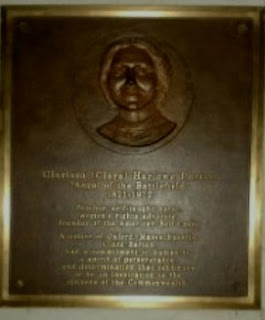Historical Profile: Charles Sumner
Cambridge, MA. - Charles Sumner (1811 – 1874) served as a U.S. Senator from Massachusetts for 23 years. Sumner was born on January 6, 1811 in Boston, Massachusetts. He attended the Boston Latin School and later graduated from Harvard College in 1830 and from Harvard Law School in 1833. After law school, he started a legal practice in Boston. In 1851, Sumner was elected to the U.S. Senate as a member of the Free Soil party. Sumner would serve in the U.S. Senate until his death on March 11, 1874.
As an abolitionist, Sumner was an outspoken critic of slavery. His ardent antislavery beliefs put him at odds with a number of his political colleagues. In May 1856 during an impassioned diatribe on the Senate floor, Sumner condemned southern slave owners. His speech was titled “The Crime Against Kansas.” In response to Sumner’s criticism of the South, Congressman Preston Brooks savagely assaulted Sumner in Senate chambers on May 22, 1856. As a result of the injuries he suffered, Sumner would not fully return to the Senate until December 1859.
There is another statue of Sumner that is located in the Boston Public Garden. In this statue Sumner is depicted standing, holding a book in his left hand. After Sumner’s death in 1874, a competition was staged to find an artist who would sculpt a monument dedicated to Sumner. Initially, Whitney won the competition, but when contest judges found out that Whitney was a woman, they disqualified her. With Whitney disqualified because of her gender, Thomas Ball of Boston was chosen to design the monument of Sumner.
“No true and permanent fame can be founded except in labors which promote the happiness of mankind.” – Charles Sumner.
As an abolitionist, Sumner was an outspoken critic of slavery. His ardent antislavery beliefs put him at odds with a number of his political colleagues. In May 1856 during an impassioned diatribe on the Senate floor, Sumner condemned southern slave owners. His speech was titled “The Crime Against Kansas.” In response to Sumner’s criticism of the South, Congressman Preston Brooks savagely assaulted Sumner in Senate chambers on May 22, 1856. As a result of the injuries he suffered, Sumner would not fully return to the Senate until December 1859.
There is another statue of Sumner that is located in the Boston Public Garden. In this statue Sumner is depicted standing, holding a book in his left hand. After Sumner’s death in 1874, a competition was staged to find an artist who would sculpt a monument dedicated to Sumner. Initially, Whitney won the competition, but when contest judges found out that Whitney was a woman, they disqualified her. With Whitney disqualified because of her gender, Thomas Ball of Boston was chosen to design the monument of Sumner.
Charles Sumner served as an inspiration to Northerners who opposed slavery. In contrast to his Northern supporters, Southern leaders detested the radical abolitionist. Sumner was a lawyer, lecturer, and orator who left an indelible mark on mid 19th century American politics.
 |
| Statue of Charles Sumner sculpted by Anne Whitney. |


Comments
Post a Comment